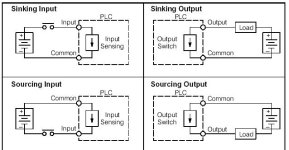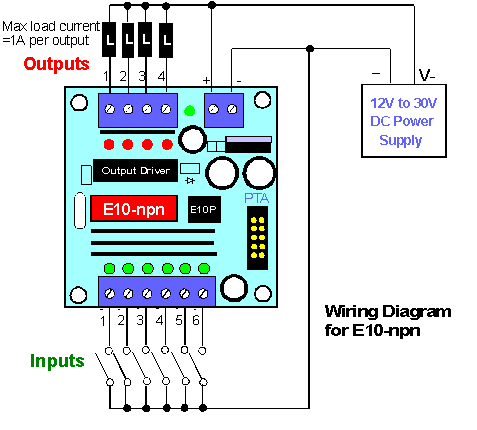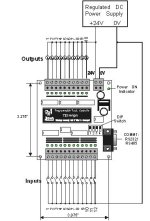Thanks for the link to the manual Ron! Very helpful!..

I think Shooter and Ron are on the right track with the backfeed idea. Since the PLC power supply and the I/O commons seem to be connected internally, this is a likely situation. If the load is a coil, +24V will be seen at the output, and transistor outputs will allow this to also be seen at the common (AKA, the OV terminal).
Is the power supply floating or grounded? If grounded, which side is grounded (+24V or 0V)? There is no separate ground terminal on the PLC. Is it grounded via it's mounting screws, or is 0V (or +24V) considered 'ground'? Although it's marked +24V and 0V, the PLC may not be polarity sensitive...

I question why the outputs are powered before the PLC. Normally, the PLC should always has power so it is 'aware' of what's going on. I hate finding a PLC that's wired to lose power when E-Stops are pressed. Just bad practice IMO...

I always use one PLC output to 'enable' the control/safety circuit. Note that this is
NOT using the PLC as the safety circuit, but simply adding the PLC output (via a N.O. relay) into the
hardwired safety circuit. Think of this output as just an 'additional' E-stop switch. This prevents starting of the machine unless the PLC is 'alive and well', with the added benefit of being able to 'E-stop' the machine from logic...

One more 'safety' issue I'll mention. The commons for 'critical' outputs should receive power through the MCR, so they can't be turned on 'accidentally' by the PLC...

Time to break out the meter and start troubleshooting!...

beerchug
-Eric









